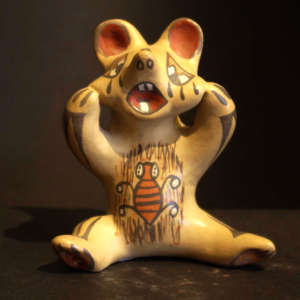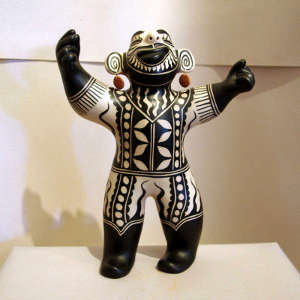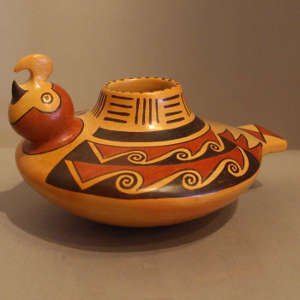Shapes and Forms: Folk Art
Most of the folk art I have seen comes from Navajo Nation potters. Some Cochiti Pueblo potters make animal and human figures, many of the human figures inspired by stories of a derailmanet of a Ringling Brothers Circus train back in the 1920's. Some Cochiti potters also make masks.
Some Santa Clara potters make turtles, mudheads and various other animal and mythic figures. A few potters from Jemez have become famous for their animal figures. Some Acoma potters make turtle storyteller figures.
Most potters from San Ildefonso recount that their earliest clay creations were "hornos" and there are still some of them floating around. Some Santa Clara and San Ildefonso potters also turned out all kinds of candlestick holders, salt and pepper shakers and other items specifically for the tourist trade.
I have also seen quite a few wall hanging pieces coming from Hopi potters, also most likely made for the tourist trade. I've seen a couple of these made by Nampeyo with hanging knobs built on the rim. I've also seen a shallow bowl made by Nampeyo that was drilled afterward to be hung. There are some of wall-hanging pieces coming from potters at Santo Domingo/Kewa, too.
Of note are the unsigned polychrome friendship and engagement baskets I've seen, made for the tourist trade by Laguna potters living at Isleta. All the materials for those pieces was mined on Laguna Pueblo, then taken to their homes at Isleta for the work. The designs and colors are distinctly Laguna but they are often identified as Isletan in origin. Traditional Isleta shapes, designs and clay colors are different. There seems to have been no cross-pollination between the groups.
Almost all the pueblos turned out ashtrays and salt-and-pepper shakers when those were in vogue among the tourists. There are also some potters from Mata Ortiz who make nothing but animal, human and dinosaur figures.
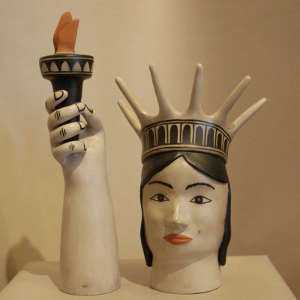
Statue of Liberty figure, Mary Janice Ortiz, Cochiti Pueblo
14.75 in H by 8 in Dia
Measurement of largest dimensions
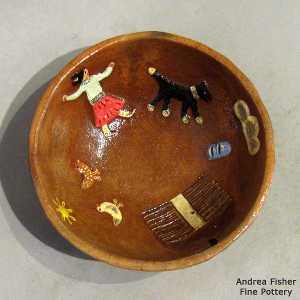
Brown bowl decorated inside with a Navajo yard scene by Elizabeth Manygoats, Navajo
1.25 in H by 6 in Dia

